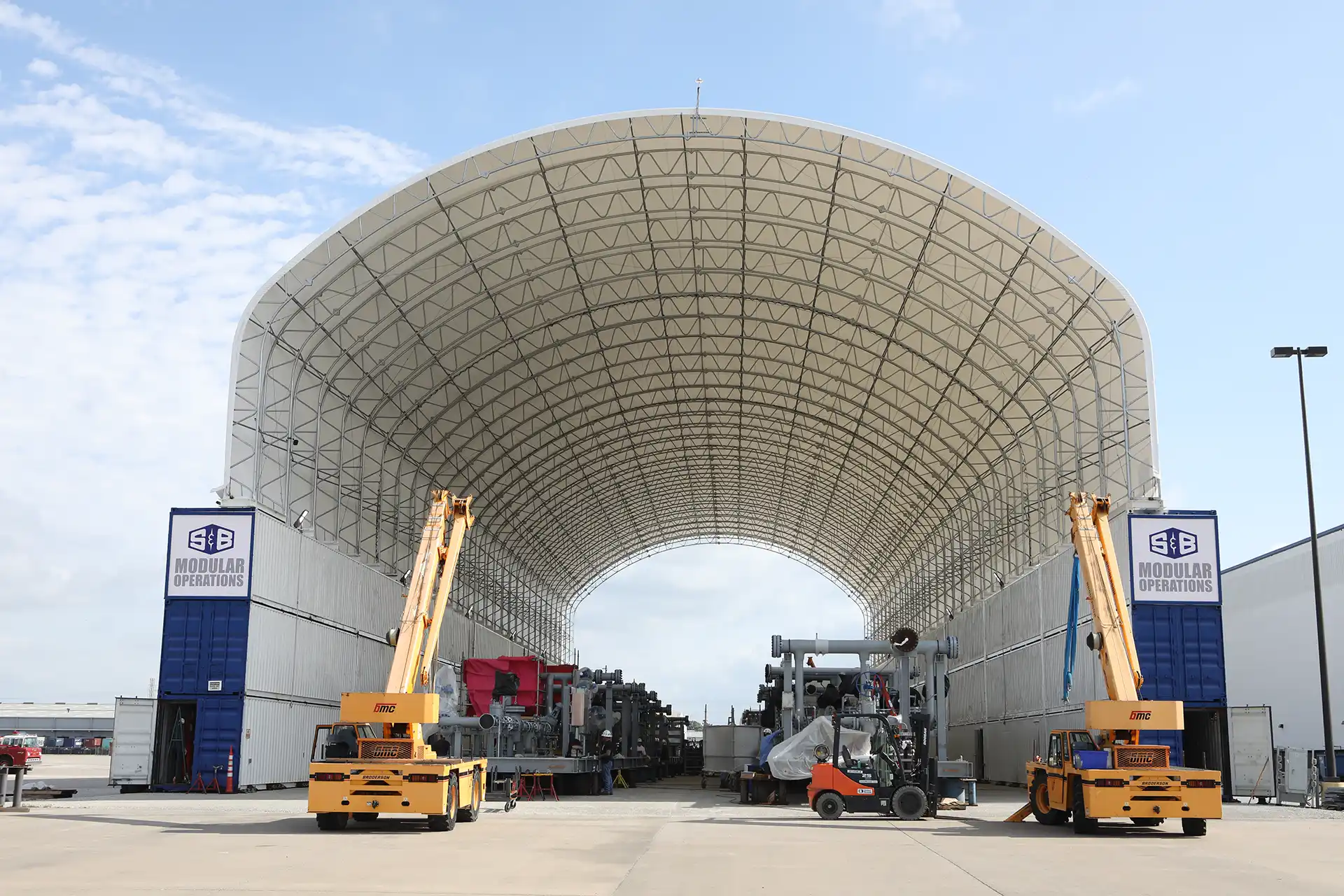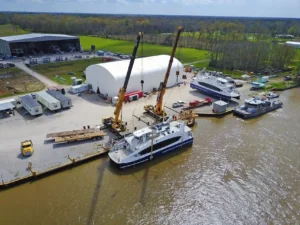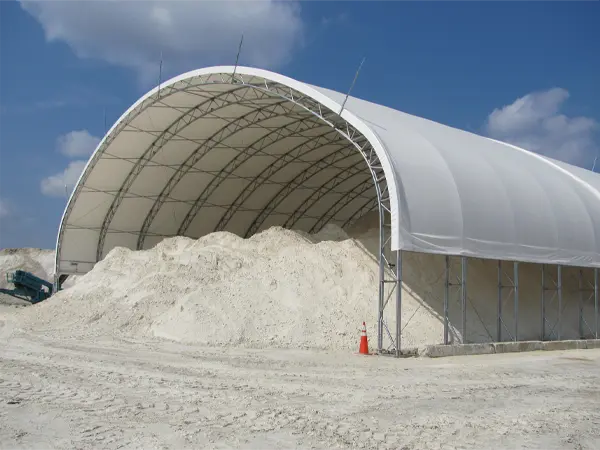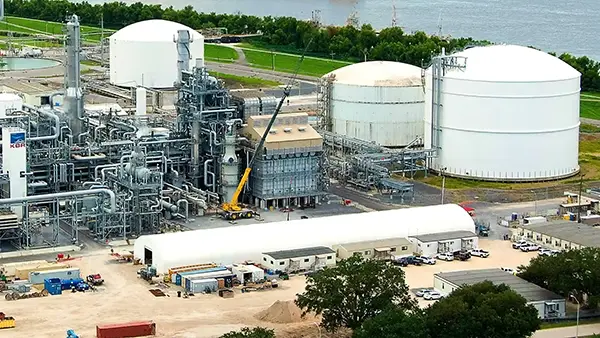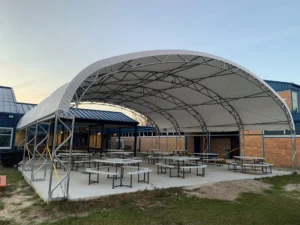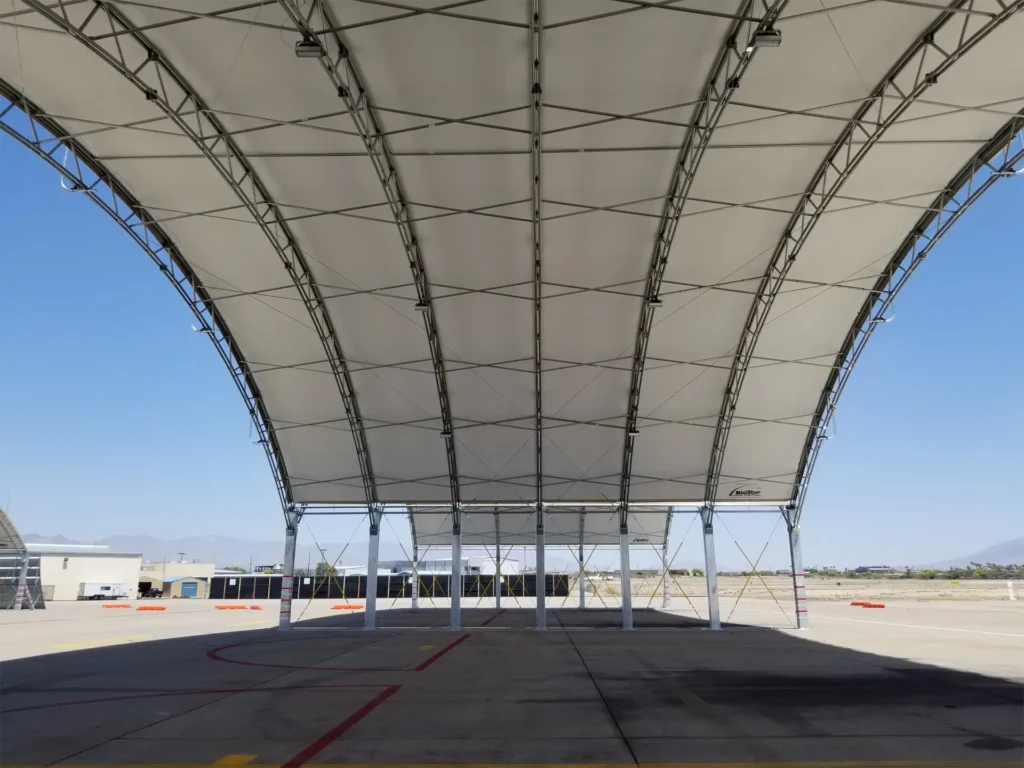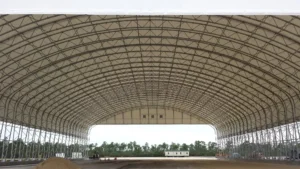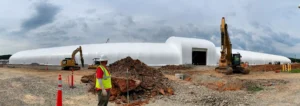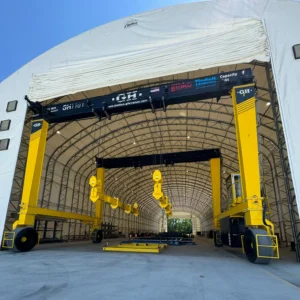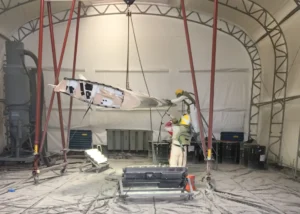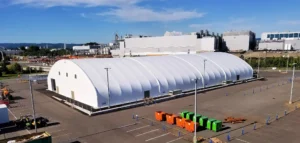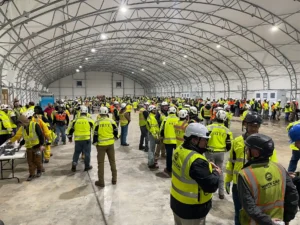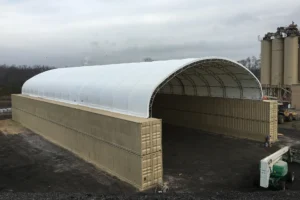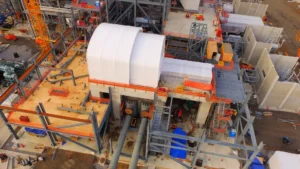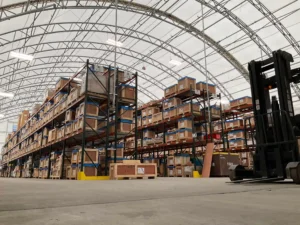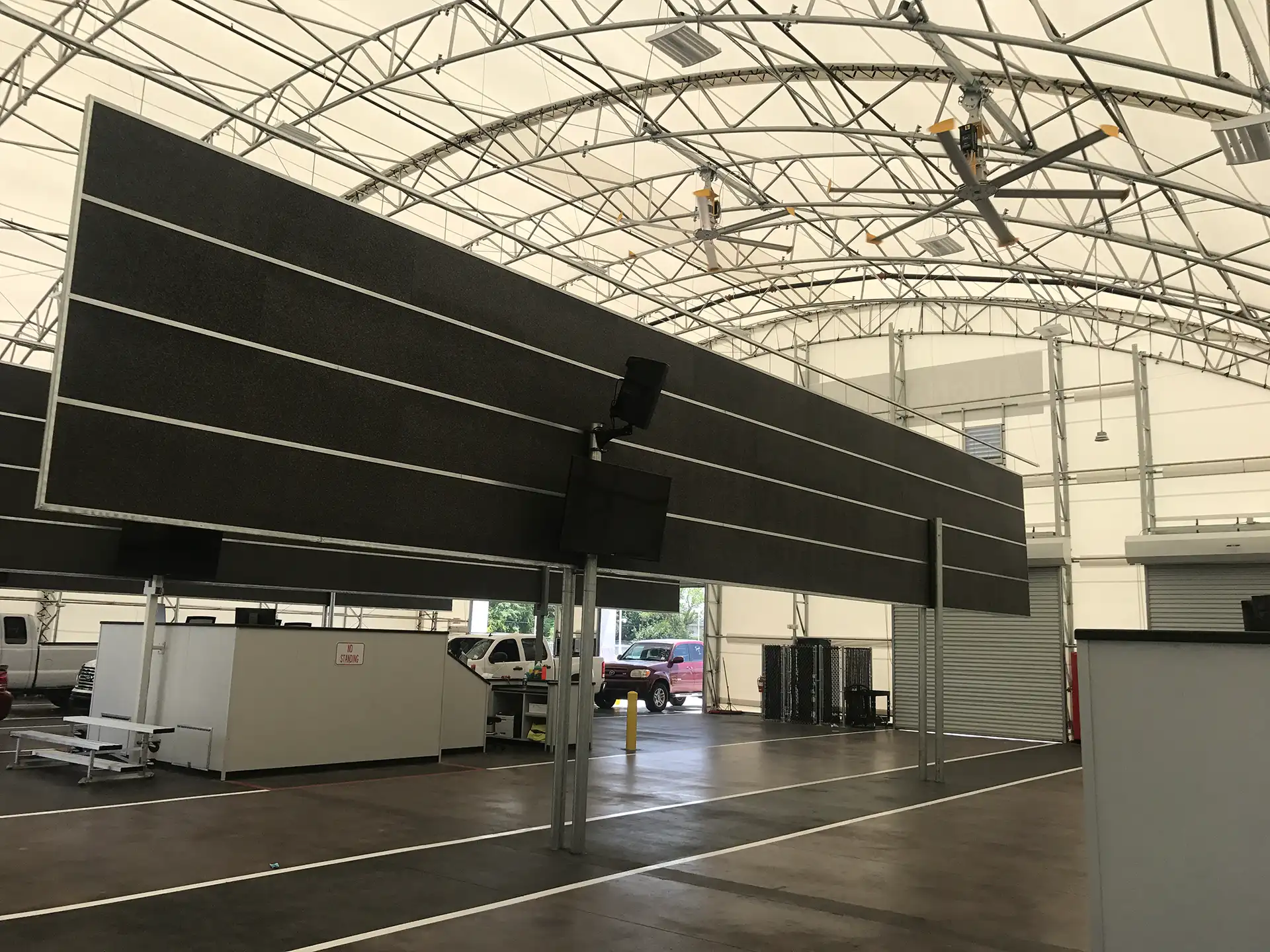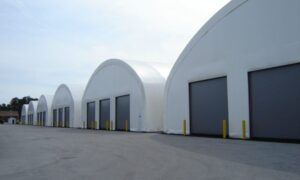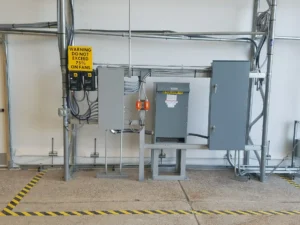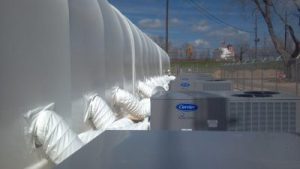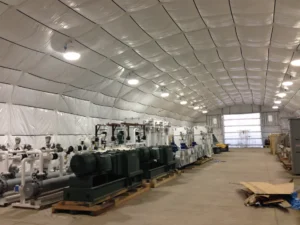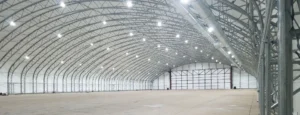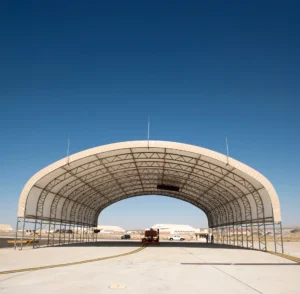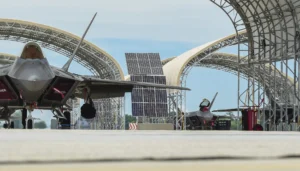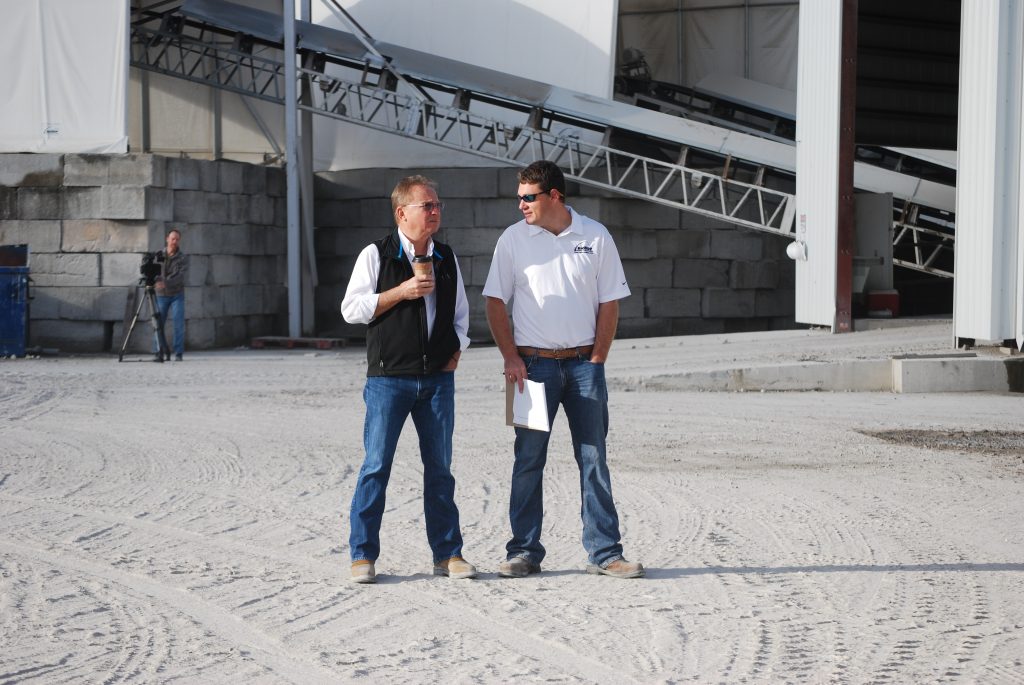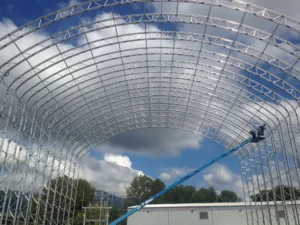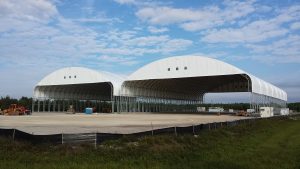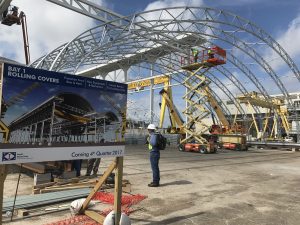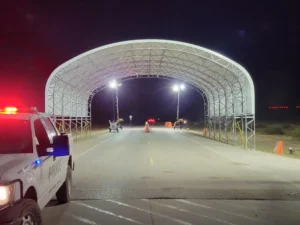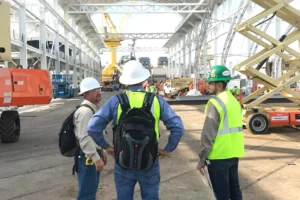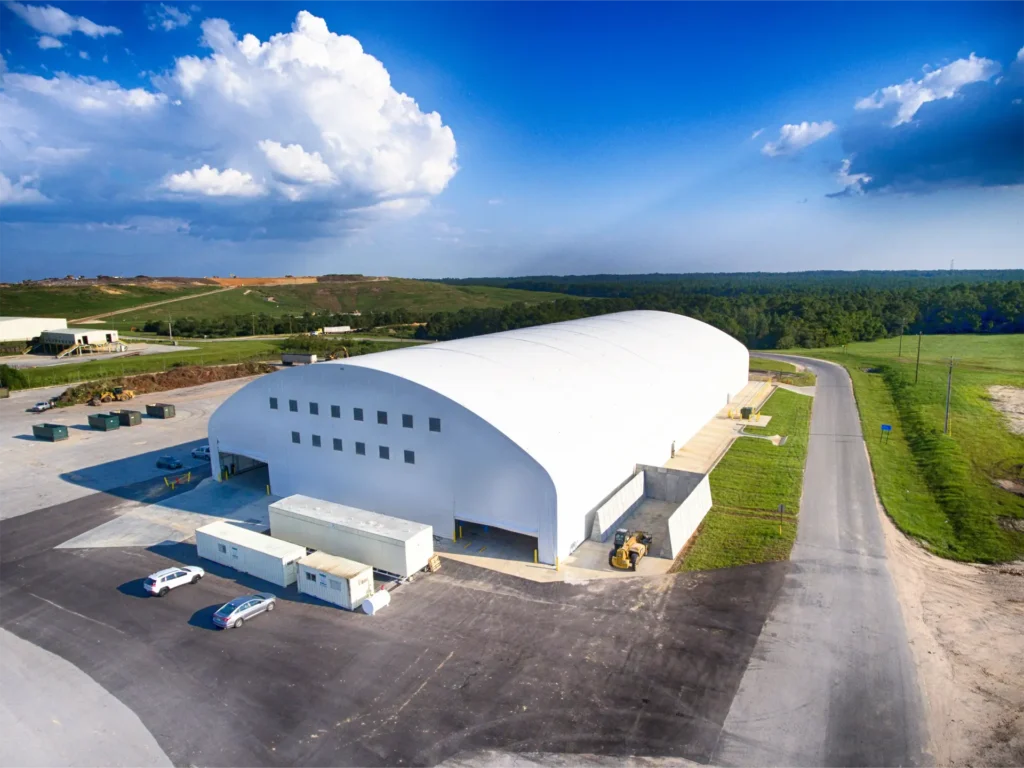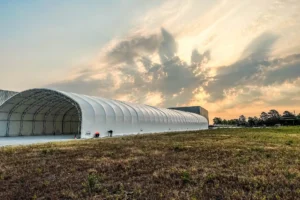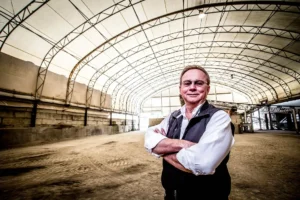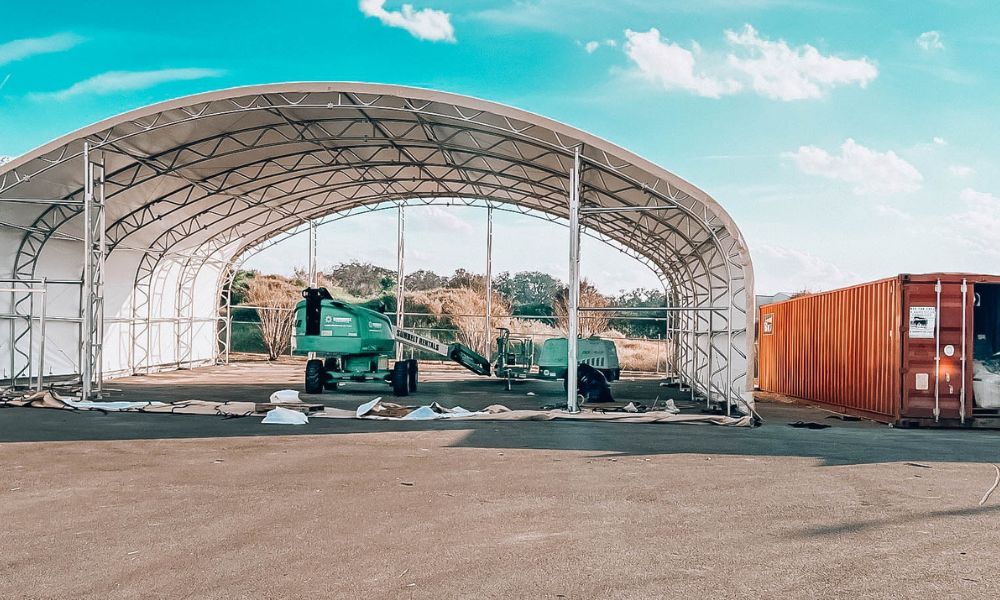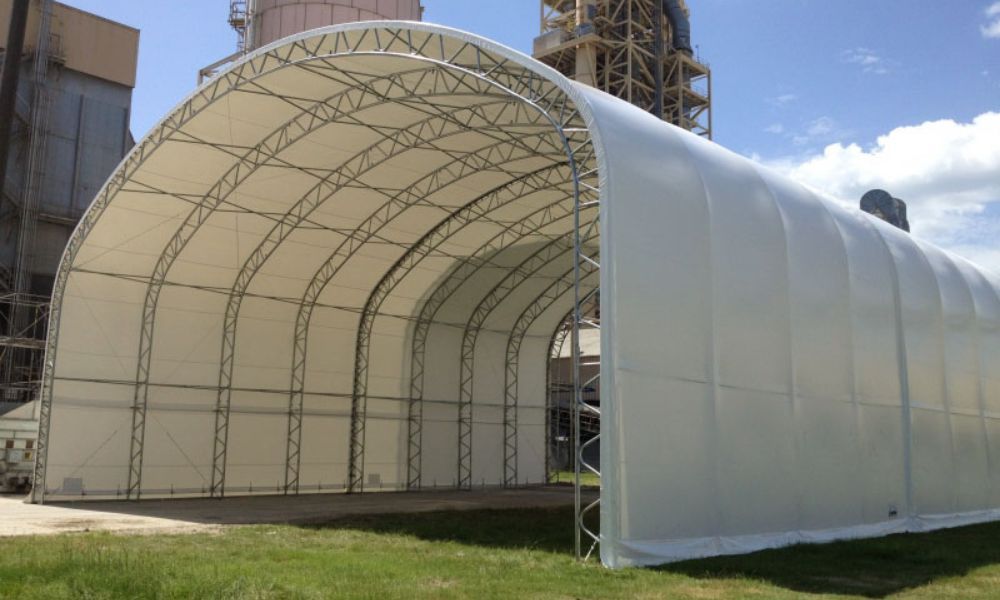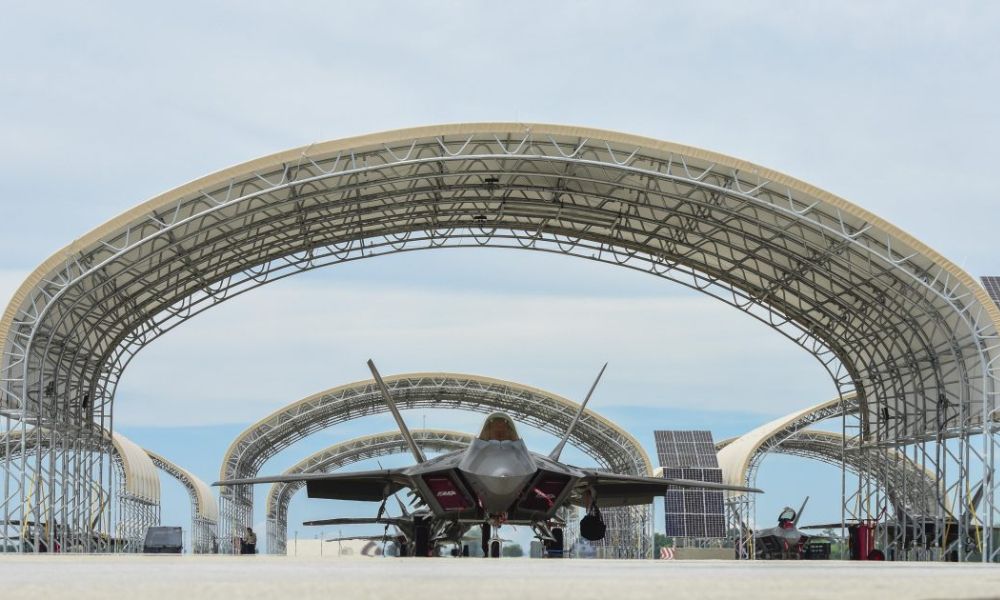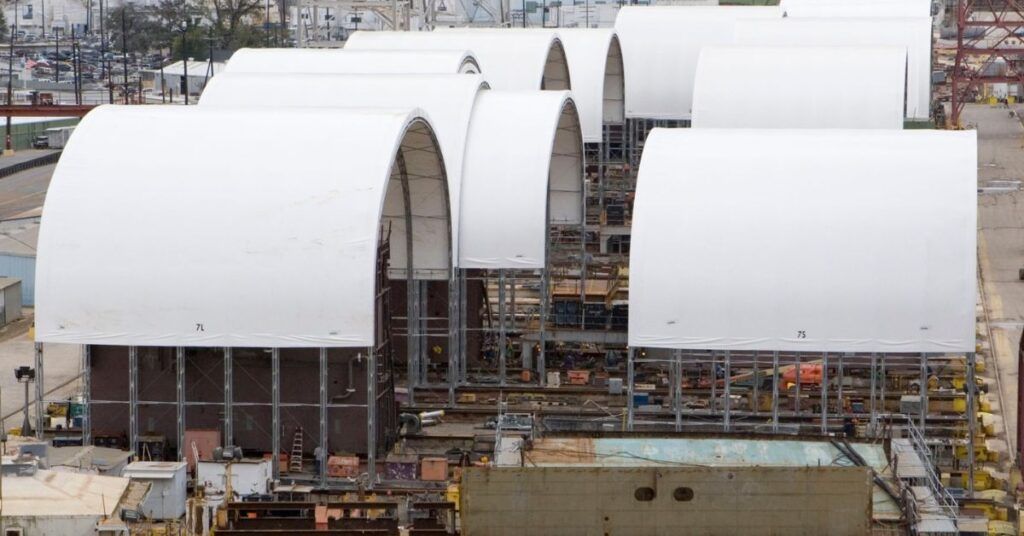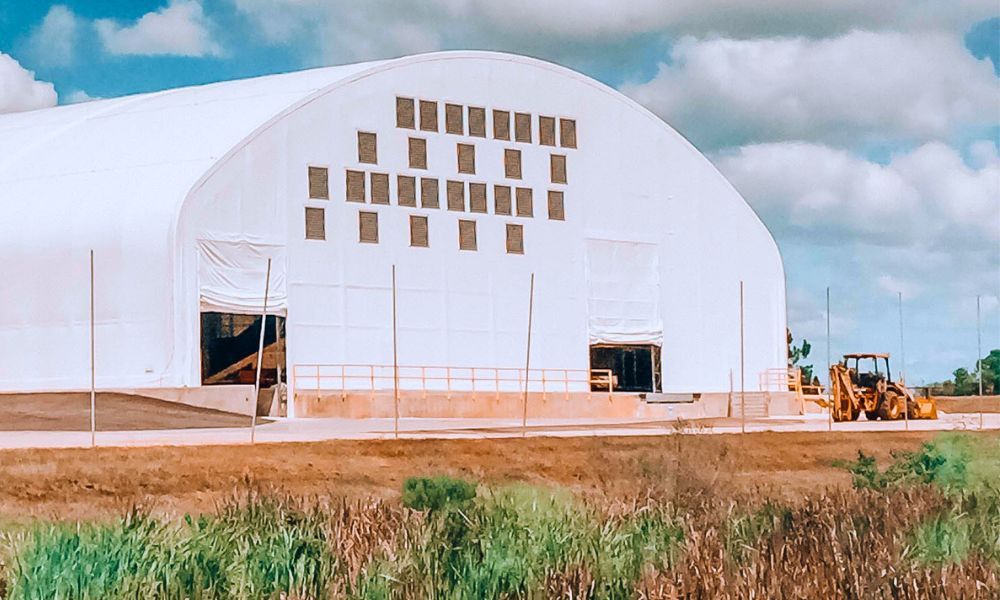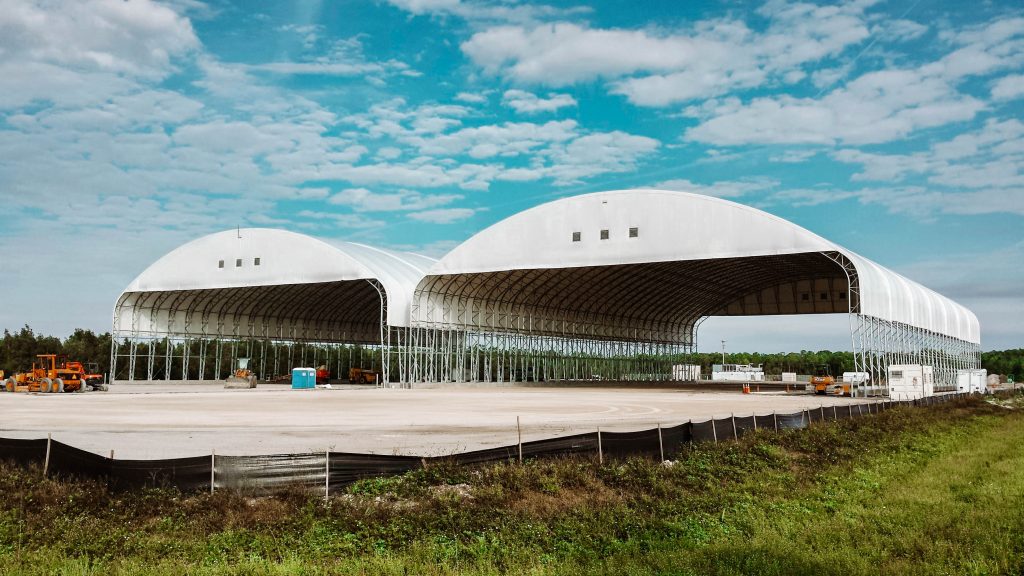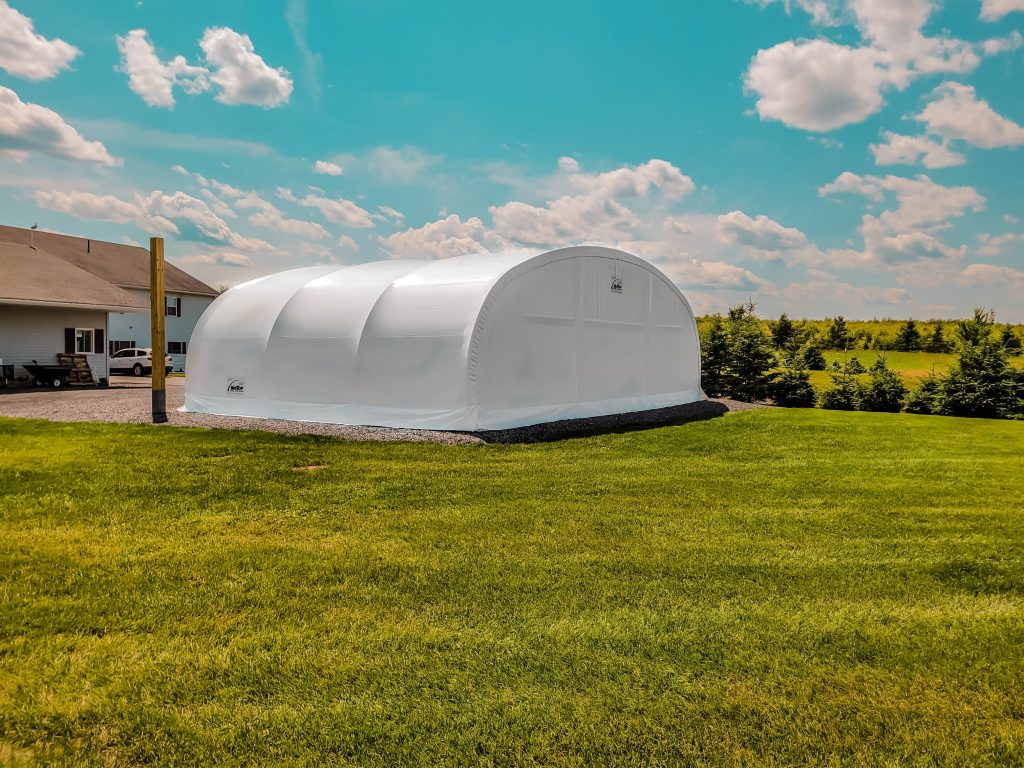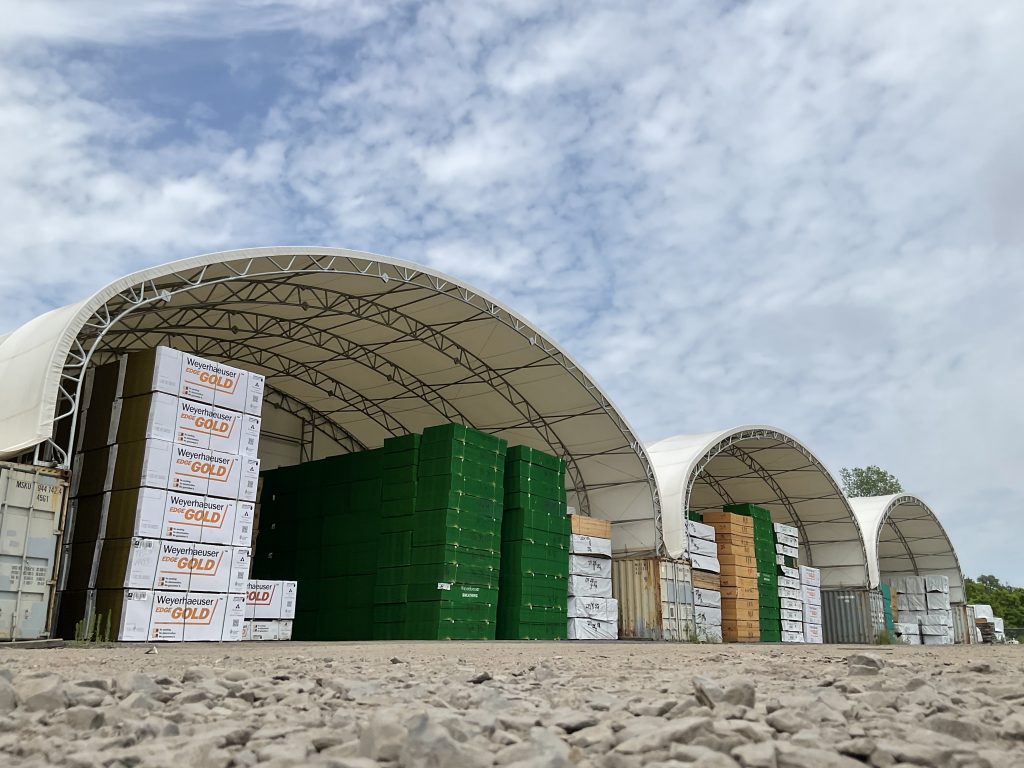Fabric structures are incredibly durable buildings that can withstand harsh weather conditions. However, your fabric structure’s overall stability and longevity depend on how well you plan and prepare your site.
As experts in fabric structures, we understand the importance of site preparation and are here to help. Let’s review some essential tips for preparing your site for a fabric structure the right way so you feel confident that your fabric structure is installed safely and securely.
Assessing Your Site Needs
The first step in preparing your site for a fabric structure is conducting a comprehensive assessment of your site needs. Start by evaluating the type of soil present on the site, as it influences the structure’s stability and the kind of foundation you’ll need to deploy. For instance, sandy soils may require a more robust foundation than clay soils.
Next, consider the location. Sites exposed to high winds or frequent inclement weather might require additional reinforcements to ensure the fabric structure can withstand such conditions. At the same time, it’s important to scrutinize local zoning laws and building codes as they can dictate certain specifications about where and how your structure can be installed. Understanding all of these factors will help you design a fabric structure tailored to your site’s specific needs, ensuring its longevity and stability.
Calculate the Number of Materials Needed
After evaluating your site’s needs, the next step is calculating and procuring the materials necessary for your fabric structure installation. This includes items such as posts, anchors, steel cables, ratchets, and tensioners, among others. While the specific quantities will vary based on your site and the size of your fabric structure, a general rule of thumb is to prepare for a little more than your calculated need. This will help you account for any unexpected challenges that may arise during installation.
For instance, you might need more posts and anchors if the soil at your site is particularly loose. Similarly, if your site is prone to high wind conditions, you might need additional steel cables and tensioners to ensure the structure’s stability. In addition to these materials, you’ll also need the appropriate tools for the installation. This could include anything from hammers and wrenches to more specialized tools like tensioning devices. Having a well-planned list of materials and tools will smooth the installation process, preventing unnecessary delays and stability issues in the future.
Preparing the Base
Properly preparing the base for your fabric structure is a crucial step that can significantly affect the stability and durability of the building. Begin by thoroughly clearing the site of any debris, vegetation, or other obstacles that could interfere with the installation process or pose potential hazards. This ensures a clean slate for the start of your project.
With the site cleared, the next step is to level the ground. This process involves grading the site to make sure it’s perfectly flat and even. An uneven surface can lead to structural instability and water pooling, which can cause premature wear and tear on your fabric structure.
Lastly, preparing the base involves laying down a suitable foundation for your fabric structure. The type of foundation you choose will largely depend on the soil type, as mentioned in the site assessment step. Typical foundations include concrete slabs, concrete footings, or helical anchors, but there are many more foundation options, and a quality installer will find a way to work with what you have.
Anchoring and Securing
Securing your fabric structure with adequate anchoring is the final step in preparing your site for a fabric structure. Anchoring your structure correctly ensures that it remains firmly in place during harsh weather conditions, providing safety and longevity.
The selection of anchors depends largely on the type of foundation you’ve chosen and the nature of the soil at your site. If you’re using concrete foundations, you can opt for bolted anchors that go directly into the concrete. Alternatively, in the case of softer grounds or where concrete foundations are not viable, screw anchors, which are twisted into the ground to provide a firm hold, may be more suitable.
Regardless of the type of anchor, it’s crucial to ensure they are installed correctly. The anchor points should be evenly distributed around the structure to effectively balance the load and resist wind forces. Make sure to check the tension on your anchors regularly and adjust as required to maintain structural integrity over time.
Remember, your fabric structure’s overall strength and safety hinge distinctly on these preparation steps. Proper site assessment, effective base preparation, and secure anchoring contribute significantly to achieving a fabric structure that is not only durable and robust but also safe and reliable.
Maintenance and Inspection
Regular maintenance and inspection are critical for the long-term stability of your fabric structure and its foundation. Start with scheduling periodic foundation inspections, particularly after heavy rainfall or extreme weather conditions. These inspections can help detect any irregularities or signs of wear and tear that might compromise the stability of your structure over time. For instance, look for signs of erosion, water pooling, or cracking in the foundation.
In addition to the foundation, it’s vital to inspect the overall fabric structure regularly. Pay attention to the fabric cover for any signs of wear, tear, or discoloration. Any loose or damaged sections should be repaired promptly to prevent further damage. Regularly checking and adjusting the tension on your anchors is also fundamental in maintaining the structural integrity of your fabric building.
Don’t ignore the interior of your structure either. Check all utilities regularly to ensure they are functioning correctly and safely. Remember to inspect electrical wiring for any signs of fraying or damage and plumbing for any leaks or blockages. Ensuring your utilities are running smoothly will help maintain a safe and efficient environment within your fabric structure.
Remember, proper maintenance and inspection are pertinent to the longevity and safety of your fabric structure. Taking these steps seriously can save you from costly repairs and unnecessary headaches in the future.
The good news is no matter what your foundation is, we can anchor our versatile canvas buildings to it. Whether it’s dirt, gravel, asphalt, or ecology blocks, Big Top has the comprehensive services to make sure your structure is secure and safe, and lasts for years to come.
